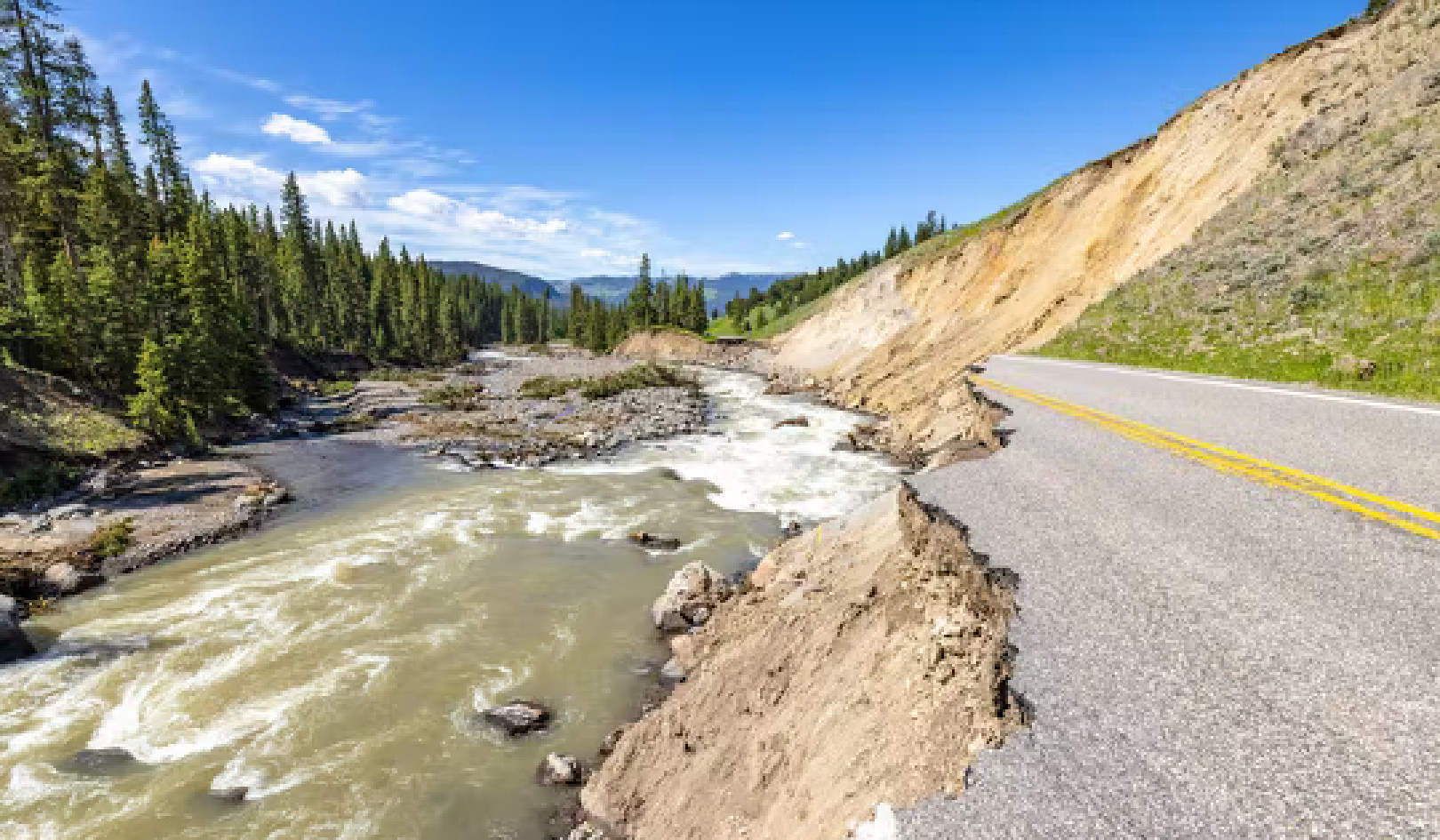
Eighteen countries from developed economies have had declining carbon dioxide emissions from fossil fuels for at least a decade. While every nation is unique, they share some common themes that can show Australia, and the world, a viable path to reducing emissions.
Global CO? emissions from fossil fuels continue to increase, with record high emissions in 2018 and further growth anticipated for 2019. This trend is linked to global economic growth, which is largely still powered by the burning of fossil fuels.
Significant reductions in the energy and carbon intensities of the global economy have not been sufficient to trigger decreases in global emissions.
But 18 countries have been doing something different. A new analysis sheds light on how they have changed their emission trajectories. There is no “silver bullet”, and every country has unique characteristics, but three elements emerge from the group: a high penetration of renewable energy in the electricity sector, a decline in energy use, and a high number of energy and climate policies in place. Something is working for these countries.
Australia was not part of the study, as its CO? emissions from the burning of fossil fuels remained largely stable over the study period 2005-2015 while the country’s economy grew. However, emissions of all greenhouse gases across all sectors of the economy (including land use change) declined over most of the same period, a trend that reversed in 2014 since when emissions have increased.
Why did emissions decline?
The 18 countries shown below all peaked their fossil fuel emissions no later than 2005 and had significant declines thereafter to 2015, the period covered by our study.
 Changes in CO2 emissions from fossil fuel combustion for 18 countries with declining emissions during 2005-2015. Countries are ordered by how soon their emissions peaked and began to decline. Le Quéré et al. Nature Climate Change (2019) based on data from the International Energy Agency @IEA/OECD
Changes in CO2 emissions from fossil fuel combustion for 18 countries with declining emissions during 2005-2015. Countries are ordered by how soon their emissions peaked and began to decline. Le Quéré et al. Nature Climate Change (2019) based on data from the International Energy Agency @IEA/OECD
Uniformly, the largest contribution to emissions reductions – about 47% – was due to decreases in the fossil share of energy production, while reductions in overall energy use contributed 36%.
However, there are large differences in the relative importance of the factors that drove emissions reductions in the various countries. For instance, reduced energy use dominated emissions reductions in many countries of the European Union, whereas a more balanced spread of factors dominated in the United States, with the single largest contributor being the switch from coal to gas. Emissions reductions in Austria, Finland and Sweden were due to an increased share of non-fossil and renewable energy.
Interestingly, our analyses suggest that there is a correlation between the number of policies to promote the uptake of renewable energy and the decline in the 18 countries.
The declining emissions were not caused by the consumption of products produced elsewhere during the period examined. Earlier in the 2000s, this practice of outsourcing emissions to other countries (for example by moving manufacturing offshore) was a significant driver of emissions decline in many developed countries. But that effect has diminished.
The lasting consequences of the 2008 global financial crisis on the global economy however did have an impact, and partially explained the reduced energy use in many countries.
How significant are these emissions declines?
Emissions declined by 2.4% per year during 2005-15 across the 18 countries.
One could argue this decline is not particularly meaningful because global fossil fuel emissions continued to grow at 2.2% per year during the same period. However, this group of countries is responsible for 28% of the global CO? emissions from fossil fuels. That is a sizeable fraction, and if the decline continues and further intensifies it can have a significant impact.
The 18 peak-and-decline countries also played a part in the stalling of global emissions between 2014 and 2016 while the global economy continued to grow, a combination that showed, briefly and for the first time, what accelerated decarbonisation would look like. While China did not have 10 years of continuous declining emissions (and hence it was not part of the group of 18 countries), it was the biggest contributor during this stalling.
There is no guarantee that the declining trends will continue over the coming decades. In fact, our global 2018 carbon budget report showed that some of the more recent country trends are fragile and require further policy and actions to strengthen the decreases and support long-term robust decarbonisation trends.
If a journey of a thousand miles begins with a single step, it seems some countries have already begun walking that road. Now we all need to start running decisively.![]()
About The Authors
Pep Canadell, CSIRO Oceans and Atmosphere; Executive Director, Global Carbon Project, CSIRO; Corinne Le Quéré, Professor, Tyndall Centre for Climate Change Research, University of East Anglia; Glen Peters, Research Director, Center for International Climate and Environment Research - Oslo; Jan Ivar Korsbakken, Senior Researcher, Center for International Climate and Environment Research - Oslo, and Robbie Andrew, Senior Researcher, Center for International Climate and Environment Research - Oslo
This article is republished from The Conversation under a Creative Commons license. Read the original article.
Related Books
Drawdown: The Most Comprehensive Plan Ever Proposed to Reverse Global Warming
by Paul Hawken and Tom Steyer In the face of widespread fear and apathy, an international coalition of researchers, professionals, and scientists have come together to offer a set of realistic and bold solutions to climate change. One hundred techniques and practices are described here—some are well known; some you may have never heard of. They range from clean energy to educating girls in lower-income countries to land use practices that pull carbon out of the air. The solutions exist, are economically viable, and communities throughout the world are currently enacting them with skill and determination. Available On Amazon
In the face of widespread fear and apathy, an international coalition of researchers, professionals, and scientists have come together to offer a set of realistic and bold solutions to climate change. One hundred techniques and practices are described here—some are well known; some you may have never heard of. They range from clean energy to educating girls in lower-income countries to land use practices that pull carbon out of the air. The solutions exist, are economically viable, and communities throughout the world are currently enacting them with skill and determination. Available On Amazon
Designing Climate Solutions: A Policy Guide for Low-Carbon Energy
by Hal Harvey, Robbie Orvis, Jeffrey Rissman With the effects of climate change already upon us, the need to cut global greenhouse gas emissions is nothing less than urgent. It’s a daunting challenge, but the technologies and strategies to meet it exist today. A small set of energy policies, designed and implemented well, can put us on the path to a low carbon future. Energy systems are large and complex, so energy policy must be focused and cost-effective. One-size-fits-all approaches simply won’t get the job done. Policymakers need a clear, comprehensive resource that outlines the energy policies that will have the biggest impact on our climate future, and describes how to design these policies well. Available On Amazon
With the effects of climate change already upon us, the need to cut global greenhouse gas emissions is nothing less than urgent. It’s a daunting challenge, but the technologies and strategies to meet it exist today. A small set of energy policies, designed and implemented well, can put us on the path to a low carbon future. Energy systems are large and complex, so energy policy must be focused and cost-effective. One-size-fits-all approaches simply won’t get the job done. Policymakers need a clear, comprehensive resource that outlines the energy policies that will have the biggest impact on our climate future, and describes how to design these policies well. Available On Amazon
This Changes Everything: Capitalism vs. The Climate
by Naomi Klein In This Changes Everything Naomi Klein argues that climate change isn’t just another issue to be neatly filed between taxes and health care. It’s an alarm that calls us to fix an economic system that is already failing us in many ways. Klein meticulously builds the case for how massively reducing our greenhouse emissions is our best chance to simultaneously reduce gaping inequalities, re-imagine our broken democracies, and rebuild our gutted local economies. She exposes the ideological desperation of the climate-change deniers, the messianic delusions of the would-be geoengineers, and the tragic defeatism of too many mainstream green initiatives. And she demonstrates precisely why the market has not—and cannot—fix the climate crisis but will instead make things worse, with ever more extreme and ecologically damaging extraction methods, accompanied by rampant disaster capitalism. Available On Amazon
In This Changes Everything Naomi Klein argues that climate change isn’t just another issue to be neatly filed between taxes and health care. It’s an alarm that calls us to fix an economic system that is already failing us in many ways. Klein meticulously builds the case for how massively reducing our greenhouse emissions is our best chance to simultaneously reduce gaping inequalities, re-imagine our broken democracies, and rebuild our gutted local economies. She exposes the ideological desperation of the climate-change deniers, the messianic delusions of the would-be geoengineers, and the tragic defeatism of too many mainstream green initiatives. And she demonstrates precisely why the market has not—and cannot—fix the climate crisis but will instead make things worse, with ever more extreme and ecologically damaging extraction methods, accompanied by rampant disaster capitalism. Available On Amazon
From The Publisher:
Purchases on Amazon go to defray the cost of bringing you InnerSelf.comelf.com, MightyNatural.com, and ClimateImpactNews.com at no cost and without advertisers that track your browsing habits. Even if you click on a link but don't buy these selected products, anything else you buy in that same visit on Amazon pays us a small commission. There is no additional cost to you, so please contribute to the effort. You can also use this link to use to Amazon at any time so you can help support our efforts.

























